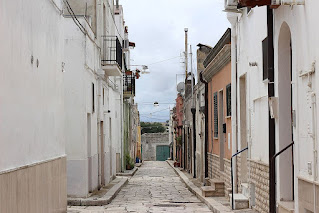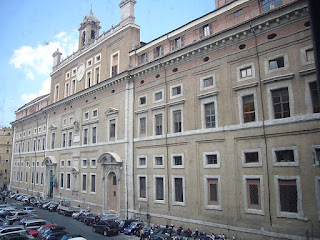Discoveries sparked belief there was life on Mars
The astronomer Giovanni Schiaparelli, whose observations in the late 19th century gave rise to decades of popular speculation about possible life on Mars, was born on this day in 1835 in Savigliano, about 60km (37 miles) south of Turin. Schiaparelli worked for more than 40 years at the Brera Observatory in Milan, most of that time as its director. It was in 1877 that he made the observations that were to cause so much excitement, a year notable for a particularly favourable 'opposition' of Mars, when Mars, Earth and the Sun all line up so that Mars and the Sun are on directly opposite sides of Earth, making the surface of Mars easier to see. Oppositions occur every two years or so but because the orbit of Mars is more elliptical than Earth's there are points at which it is much closer to the Sun than at others. An opposition that coincides with one of these points is much rarer, probably taking place only once in a lifetime, if that. Schiaparelli was deeply fascinated with Mars and knew that this opposition gave him the opportunity of his lifetime to make a detailed survey of the red planet and made every effort to ensure his vision and his senses were as sharp as they could be when he put his eye to the telescope. Read more…
______________________________________
Giangiacomo Feltrinelli – publisher
Accidental death of an aristocratic activist
Giangiacomo Feltrinelli, a leading European publisher and one of Italy’s richest men, died on this day in 1972 after being blown up while trying to ignite a terrorist bomb on an electricity pylon at Segrate near Milan. It was a bizarre end to the life and career of a man who had helped revolutionise Italian book publishing. He became famous for his decision to translate and publish Boris Pasternak’s novel Doctor Zhivago after the manuscript was smuggled out of the Soviet Union, where it had been banned on the grounds of being anti-Soviet. This was an event that shook the Soviet empire and led to Pasternak winning the Nobel Prize in Literature. Feltrinelli also started the first chain of book shops in Italy, which still bear his name. He was born in 1926 into a wealthy, monarchist family. At the instigation of his mother, Feltrinelli was created Marquess of Gargnano when he was 12 by Benito Mussolini. During the Second World War, the family left their home, Villa Feltrinelli, north of Salò on Lake Garda to make way for Mussolini to live there. But in the later stages of the war, Feltrinelli enrolled in the Italian Communist Party and fought against the Germans and the remnants of Mussolini’s regime. From 1949 onwards, Feltrinelli collected documents for the Giangiacomo Feltrinelli Library in Milan. Read more…
_____________________________________
Victor Emmanuel II
The first king to rule over a united Italy
King Victor Emmanuel II was born Vittorio Emanuele Maria Alberto Eugenio Ferdinando Tommaso on this day in 1820 in Turin. He was proclaimed the first king of a united Italy in 1861 by the country’s new parliament and in 1870, after the French withdrew, he entered the city of Rome and set up the new Italian capital there. The Italian people called him Padre della Patria - Father of the Fatherland. Born Prince Victor Emmanuel of Savoy, he was the eldest son of Charles Albert, Prince of Carignano, and Maria Theresa of Austria. His father succeeded a distant cousin as King of Sardinia- Piedmont in 1831. In 1842 Victor Emmanuel married his cousin Adelaide of Austria and was styled as the Duke of Savoy before becoming King of Sardinia-Piedmont after his father abdicated the throne following a humiliating military defeat by the Austrians at the Battle of Novara. In 1852 Victor Emmanuel appointed Camillo Benso, Count of Cavour as Prime Minister of Piedmont-Sardinia, who turned out to be a shrewd politician and masterminded his campaign to rule over a united Italy. Read more…
_______________________________________
Giuseppe Maria Crespi - painter
Artist from Baroque period who excelled in genre painting
The painter Giuseppe Maria Crespi, one of the first Italian exponents of genre painting, which depicts ordinary people in scenes from everyday life, was born on this day in 1665 in Bologna. Crespi also painted portraits and caricatures as well as religious paintings, especially at the beginning and end of his career. Even in his religious work, the scenes would include ordinary people, such as his acclaimed series, the The Seven Sacraments, originally commissioned by Cardinal Pietro Ottoboni in Rome, which now hangs in the Gemäldegalerie Alte Meister - the Old Masters’ Gallery - in Dresden. Growing up in Bologna, he learned the basics of drawing and painting from Angelo Michele Toni, to whom he was apprenticed at the age of 12. His taste in clothes - he favoured the tight garments characteristic of Spanish fashion - earned him the nickname Lo Spagnuolo - the Spaniard. After leaving Toni, he spent much time studying and copying the work around the city of the Carracci brothers - Annibale, Agostino and Ludovico - whose fresco decorations adorned the cloister of San Michele in Bosco and the Palazzo Magnani and Palazzo Fava. Their work proved to be a lasting influence. Read more…
_____________________________________
Book of the Day: Atlas of Astronomical Discoveries, by Govert Schilling
In his Atlas of Astronomical Discoveries, astronomy journalist Govert Schilling tells the story of 400 years of telescopic astronomy. He looks at the 100 most important discoveries since the invention of the telescope. Doing what Schilling does best, he takes the reader on an adventure through both space and time. Photographs and amazing pictures line the pages of this book, offering the reader an escape from this world and an invitation to a world far beyond what the unaided human eye can detect. The book offers a unique combination of informative text, magnificent illustrations and stylish design, examines the 100 most important discoveries since the invention of the telescope and features spectacular photographs, taken with the largest telescopes on Earth and in space, that portray distant corners of the universe.Govert Schilling is an internationally acclaimed astronomy writer in the Netherlands. He is a contributing editor of Sky & Telescope, and his articles have appeared in Science, New Scientist and BBC Sky at Night Magazine. He has written more than 50 books. In 2007, the International Astronomical Union named asteroid (10986) Govert after him.
%20(1).jpg)


.jpg)



.jpg)

.jpg)








.jpg)

